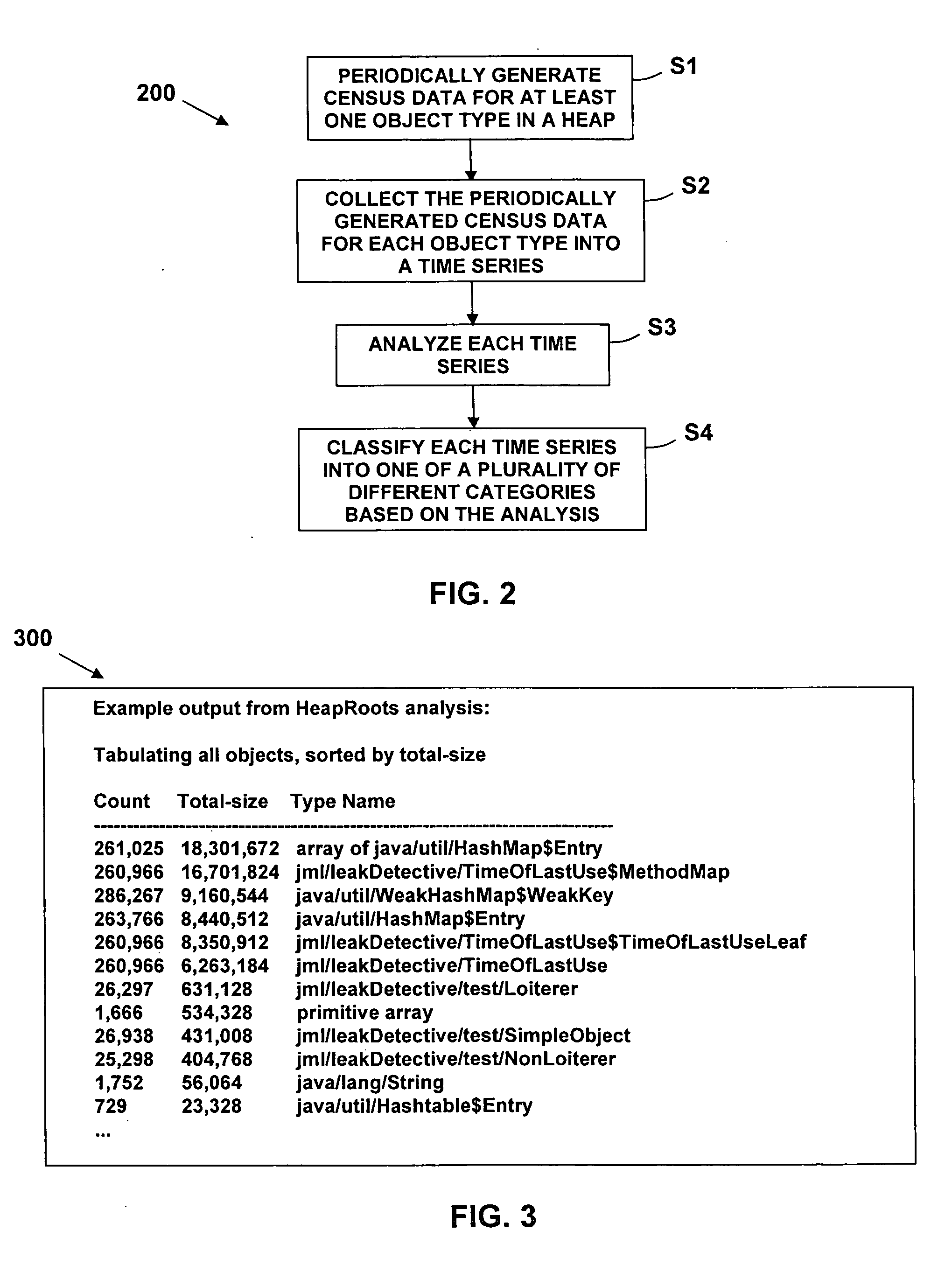Method, system, and computer program product for detecting memory management anti-patterns
a memory management and anti-pattern technology, applied in the field of memory management, can solve problems such as out-of-control memory growth, negative consequences of use (or misuse), and significant performance impa
- Summary
- Abstract
- Description
- Claims
- Application Information
AI Technical Summary
Benefits of technology
Problems solved by technology
Method used
Image
Examples
Embodiment Construction
[0025] As indicated above, the present invention provides a method, system, and computer program product for detecting performance-degrading memory management anti-patterns, particularly in systems with automatic storage reclamation (“garbage collection”). In particular, in accordance with the present invention, census data is periodically collected to obtain the distribution of live object types. The collected census data is then subjected to time-series analysis, and each time series is classified into one of a plurality of different categories that reflect different kinds of memory management issues over a variety of temporal scales. These classifications are used to drive the collection of additional information to pinpoint the contributors to the memory management issue.
[0026] A flow diagram 200 of a method in accordance with the present invention is illustrated in FIG. 2. Given a workload comprising a series of periodic task executions (iterations), the following steps are pe...
PUM
 Login to View More
Login to View More Abstract
Description
Claims
Application Information
 Login to View More
Login to View More - R&D
- Intellectual Property
- Life Sciences
- Materials
- Tech Scout
- Unparalleled Data Quality
- Higher Quality Content
- 60% Fewer Hallucinations
Browse by: Latest US Patents, China's latest patents, Technical Efficacy Thesaurus, Application Domain, Technology Topic, Popular Technical Reports.
© 2025 PatSnap. All rights reserved.Legal|Privacy policy|Modern Slavery Act Transparency Statement|Sitemap|About US| Contact US: help@patsnap.com



